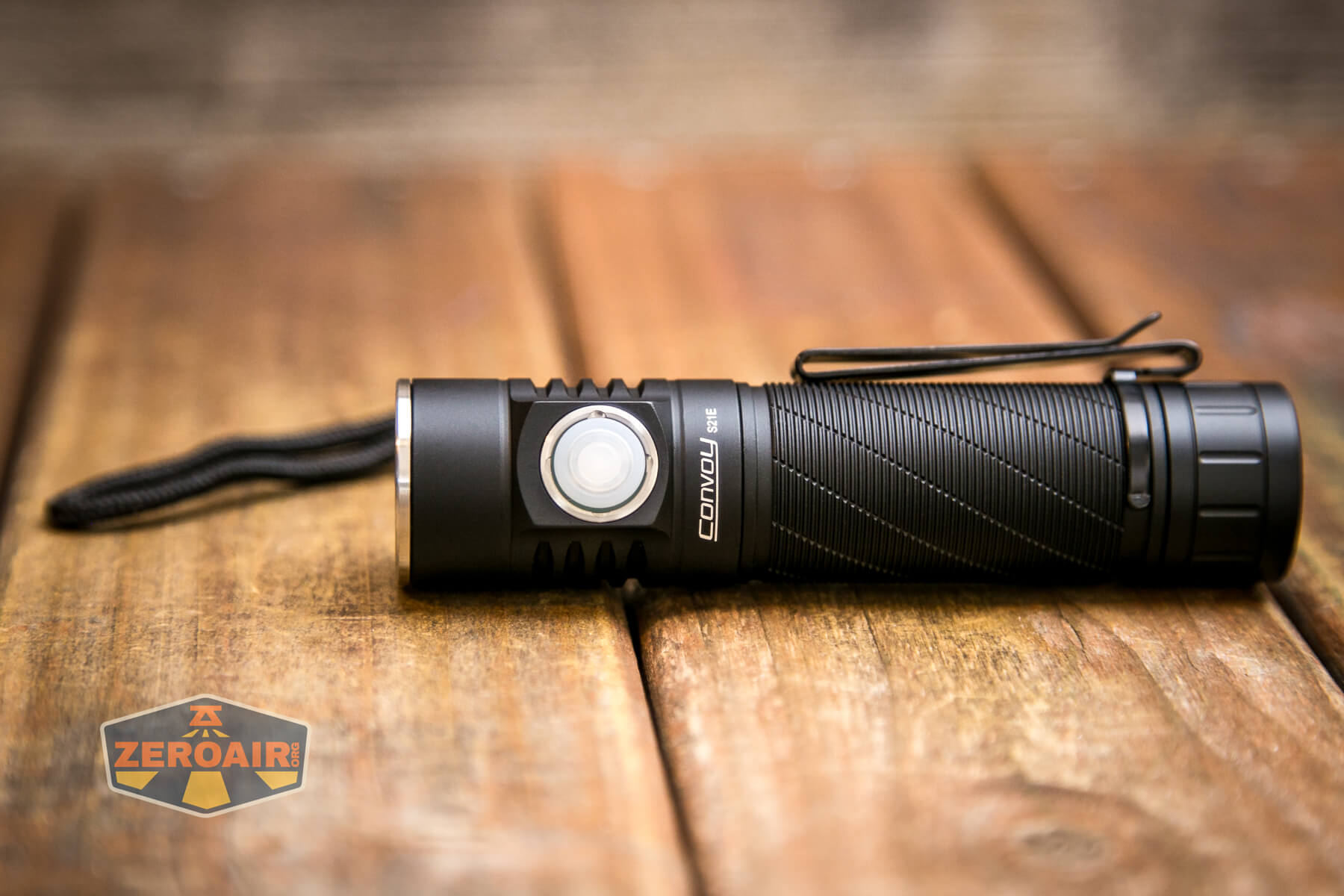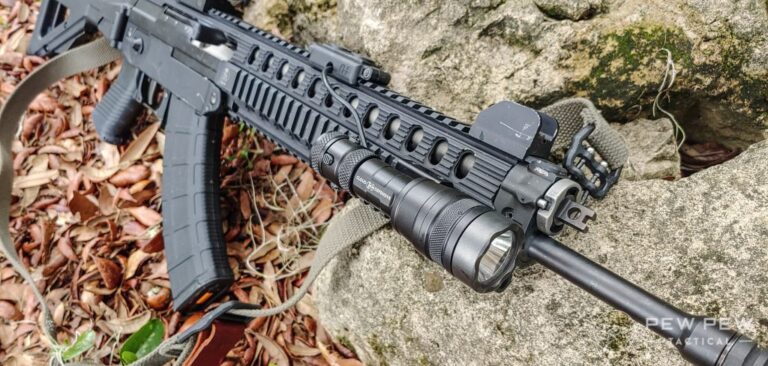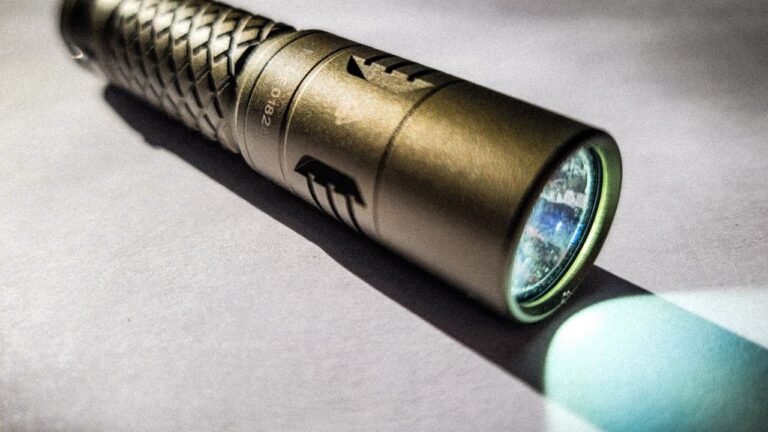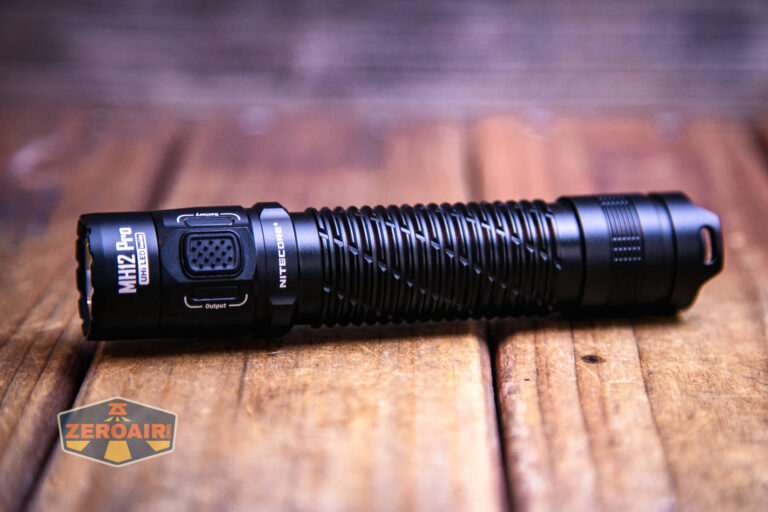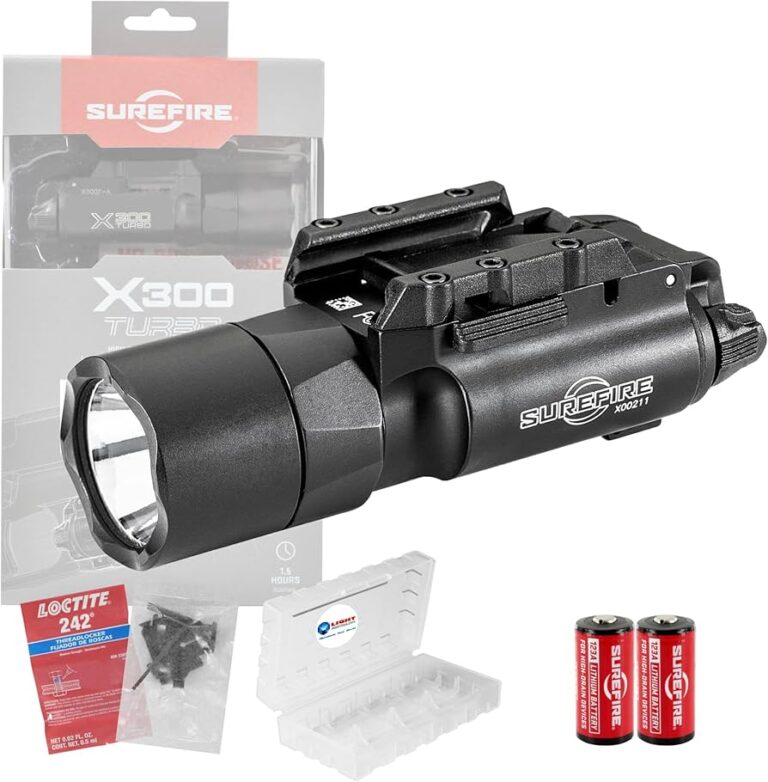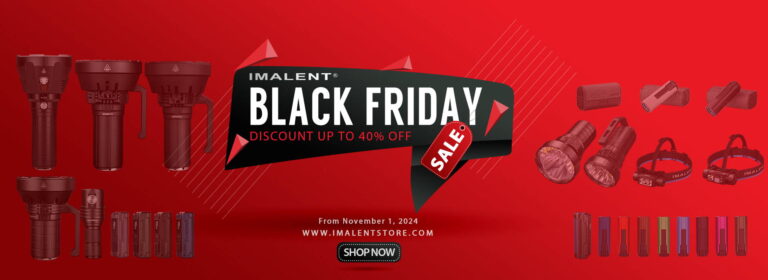Convoy S21E Review: A Comprehensive Look at Performance
The Convoy S21E flashlight marks a significant evolution in the Convoy lineup, tailored for the modern flashlight enthusiast. With a compact design and robust features, the S21E is designed to meet the diverse needs of both everyday carry (EDC) users and professionals.
Key highlights include the USB-C charging capability, a selection of emitter options, and a user-friendly interface. This review will explore the S21E’s design, functionality, and performance, focusing on aspects such as build quality, light output, user interface, and real-world usability.
By the end of this article, readers will have a comprehensive understanding of the Convoy S21E and whether it suits their needs for a high-quality flashlight.
Table of Contents
- Build Quality and Design
- LED Options and Light Output
- User Interface and Controls
- Performance in Real-World Use
- Charging Capabilities
- Comparisons with Other Convoy Models
- FAQ Section
- Conclusion
Build Quality and Design
The Convoy S21E exhibits impressive build quality, characteristic of the Convoy brand. The flashlight is crafted from anodized aluminum, providing both a durable exterior and a lightweight design.
The dimensions of the S21E are 116.4 mm in length and 27.3 mm in diameter, making it compact for a 21700 flashlight. This size allows for easy portability without compromising on performance.
The anodized finish is generally smooth, although some users have noted variations in coating thickness, which may affect durability over time.
Material and Finish
The S21E’s construction features a matte black anodized aluminum body that is both lightweight and resilient. This material choice not only enhances the flashlight’s durability but also contributes to its aesthetic appeal.
The anodization process ensures resistance to scratches and wear, though some users have reported issues with the finish wearing off after extended use.
Dimensions and Weight
As mentioned, the S21E measures 116.4 mm in length and 27.3 mm in diameter. This compact size is significant for users seeking an EDC flashlight that is easy to carry.
Weighing in at approximately 88 grams without the battery, it is light enough to be comfortably carried in pockets or attached to gear.
| Dimension | Measurement |
|---|---|
| Length | 116.4 mm |
| Diameter | 27.3 mm |
| Weight (without battery) | 88 g |
The S21E’s proportions contribute to its usability, making it manageable for one-handed operation. The flashlight’s design also includes a flat tailcap, allowing for tail standing, which is useful for hands-free use during activities like camping or emergency work.
Ergonomics and Grip
The S21E’s design features a textured grip, enhancing user handling. The slight knurling provides a secure hold even in wet conditions.
The positioning of the side switch and USB-C port opposite each other helps prevent accidental activations. However, some users have noted that the clip, while functional, may be too tight or difficult to maneuver, leading to minor cosmetic issues when adjusting.
| Comparison with Other Convoy Models | S21E | S21A | S21F |
|---|---|---|---|
| Length | 116.4 mm | 121 mm | 121 mm |
| Diameter | 27.3 mm | 27.5 mm | 33.1 mm |
| Weight (without battery) | 88 g | 120 g | 120 g |
This table illustrates the S21E’s compact form factor compared to its counterparts, making it an attractive option for users who prioritize portability. The slight variations in diameter and weight between models indicate the S21E’s design focus on being lightweight without compromising essential features.
LED Options and Light Output
The Convoy S21E is available with several LED options, including the Nichia 519A, Luminus SST40, and Luminus SFT40. These choices significantly affect the flashlight’s performance, particularly in terms of brightness and color rendering.
Each LED type is suited for different applications, making the S21E adaptable to various user needs.
Emitter Choices
The S21E can be ordered with different emitters to cater to user preferences. The Nichia 519A is known for its high color rendering index (CRI), offering excellent color fidelity, while the Luminus emitters are designed for higher lumen output.
Users can select from warm to cool white outputs depending on their specific lighting requirements.
Lumen Output and CRI
Lumen output varies based on the selected emitter. For instance, the Nichia 519A can achieve up to 1300 lumens, while the Luminus SFT40 can reach approximately 1800 lumens.
These outputs make the S21E a versatile option for both indoor and outdoor use.
| Emitter Type | Max Lumen Output | Color Rendering Index (CRI) |
|---|---|---|
| Nichia 519A | 1300 lm | 95+ |
| Luminus SST40 | 1600 lm | 90+ |
| Luminus SFT40 | 1800 lm | 85+ |
This table highlights the varying lumen outputs and CRI values associated with different emitter choices. The high CRI of the Nichia 519A makes it particularly suitable for tasks requiring accurate color representation, such as photography and detailed inspections.
Color Temperature Variations
Users can also choose between different color temperatures, ranging from warm white (around 3000K) to cooler temperatures (up to 6500K). The wider range of color temperatures allows users to select the best light for their specific environment, whether for outdoor adventures or indoor tasks.
This variability enhances the flashlight’s usability in various scenarios.
| Color Temperature | Measured CCT (K) | CRI |
|---|---|---|
| Warm White (3000K) | 2900-3100K | 95+ |
| Neutral White (4000K) | 3900-4100K | 96+ |
| Cool White (5000K) | 4800-5200K | 90+ |
This table provides insight into the color temperature options available for the S21E. Each temperature serves different lighting needs, with warmer tones being preferable for cozy indoor settings, while cooler tones are excellent for tasks requiring bright and clear illumination.
User Interface and Controls
The S21E utilizes an electronic side switch, which distinguishes it from many other Convoy models that feature tail switches. This design choice enhances ergonomics, particularly when the flashlight is used for prolonged periods.
The interface allows for both smooth and stepped ramping, with the option for momentary turbo and strobe modes.
UI Design and Functionality
The user interface of the S21E is designed for ease of use, providing different operational modes that can be cycled through easily. Key functions include:
- Single click to turn on/off (with last mode memory)
- Press and hold for moonlight mode
- Double click for turbo mode
- Triple click for strobe mode
- Click and hold to adjust brightness in both ramping modes
Mode Selection and Memory
One of the notable features of the S21E is its mode memory, which allows it to remember the last brightness setting used. However, the light resets to the low mode after being mechanically locked out, which may be inconvenient for some users.
Lockout and Safety Features
The flashlight includes various safety features, such as an electronic lockout mode accessible via ten clicks. Users can also achieve a mechanical lockout by slightly unscrewing the tail cap, preventing accidental activation when stored.
| Function | Action |
|---|---|
| Turn On/Off | Single Click |
| Moonlight Mode | Press and Hold (from OFF) |
| Turbo Mode | Double Click |
| Strobe Mode | Triple Click |
| Lockout Mode | 10 Clicks from OFF |
This table summarizes the various functions of the S21E’s user interface, illustrating the straightforward nature of its operation. The inclusion of both moonlight and turbo modes adds versatility, while the lockout feature enhances safety during transport.
Performance in Real-World Use
Real-world performance is a critical aspect of any flashlight review. The S21E has been tested in various scenarios, including outdoor use, home lighting, and emergency situations.
Its runtime, heat management, and beam pattern are essential factors to consider for potential users.
Runtime Tests
In practical testing, the S21E demonstrated impressive runtimes across different brightness settings. With a fully charged 21700 battery, the flashlight maintained consistent output for extended periods, particularly in lower modes.
The following table outlines the measured runtimes for various settings:
| Mode | Measured Runtime (hours) | Brightness (approx.) |
|---|---|---|
| Moonlight | 36+ | 5 lm |
| 10% | 6.5 | 155 lm |
| 40% | 2.5 | 420 lm |
| 100% | 1.5 | 1300 lm |
These runtime results indicate that the S21E is capable of sustaining brightness levels well beyond typical expectations for its size, making it suitable for prolonged use during camping trips or emergency situations.
Heat Management
While the S21E performs admirably in terms of output, it does tend to generate considerable heat, particularly at higher settings. Users reported temperatures reaching up to 60°C (140°F) during extended use at maximum brightness.
Although thermal management is an essential feature for the longevity of electronic devices, the S21E’s design does not include advanced thermal regulation, which may lead to user discomfort if held for extended periods.
Beam Pattern and Coverage
The S21E features an orange peel reflector that produces a smooth beam pattern, transitioning from a bright hotspot to a broad spill. This design is advantageous for close-up tasks, providing sufficient illumination without harsh edges.
Users have noted that the beam is particularly effective for indoor use, reading, and outdoor activities such as hiking or camping.
| Performance Metrics | Measured Value |
|---|---|
| Max Lumen Output | 1300 lm |
| Beam Distance | Approximately 175 m |
| Peak Beam Intensity | 7650 candela |
This performance metrics table provides a clear view of the S21E’s capabilities in real-world applications. The beam distance and intensity values indicate that the flashlight is not only suitable for close-range activities but can also deliver sufficient light for medium-range tasks, making it versatile for various user needs.
Charging Capabilities
The inclusion of USB-C charging in the S21E represents a significant upgrade over many traditional flashlights. The charging port is conveniently located, and the flashlight supports fast charging capabilities up to 2A, making it efficient for users on the go.
Charging Speed and Efficiency
The S21E’s charging process is straightforward, with the indicator light changing from red to green upon completion. Users can expect to achieve a full charge in approximately 2.5 to 3 hours, depending on the battery’s initial state.
This is particularly beneficial for those who need a quick turnaround between uses.
Battery Compatibility
The S21E is compatible with standard 21700 batteries. For optimal performance, users are advised to use batteries rated for high discharge rates, such as the Samsung 50E or Molicel 21700 cells.
This ensures that the flashlight can achieve its maximum output without performance issues.
Indicator Lights
The status of the battery is easily monitored through the side switch’s indicator light. While charging, the light glows red, transitioning to green once fully charged.
However, there is currently no low battery indicator during flashlight operation, which could enhance user experience by providing a warning before the light shuts down.
| Charging Specifications | Value |
|---|---|
| Charging Port | USB-C |
| Max Charging Current | 2A |
| Charging Time | 2.5 – 3 hours |
This table summarizes the charging capabilities of the S21E, showcasing its efficient charging structure and compatibility with standard USB-C charging devices. The ability to charge quickly is a vital feature for users who rely on their flashlights for everyday tasks or emergencies.
Comparisons with Other Convoy Models
The Convoy S21E stands out among its counterparts, such as the S21F and S21A, due to its unique features and performance metrics. This section will provide a comparative analysis of the S21E against these popular models, focusing on key differentiating factors.
S21E vs S21F
The S21F, known for its quad LED setup and adjustable color temperature, offers a different user experience compared to the S21E. While the S21F can produce a maximum of 2000 lumens, the S21E achieves 1300 lumens but with a simpler user interface.
The S21E is favored for its compact design and ease of use, while the S21F caters to users looking for more advanced features like tint blending.
S21E vs S21A
The S21A is another competitor within the Convoy lineup. It features a similar design but lacks the USB-C charging and electronic side switch found in the S21E.
While the S21A is a great option for traditional flashlight users, the S21E appeals to those seeking modern conveniences.
Price-to-Performance Analysis
All three models are competitively priced, with the S21E generally being the most affordable. This positions it as a strong contender for users who want quality performance without breaking the bank.
The S21E is particularly appealing for those new to the flashlight hobby or casual users who need a reliable light source.
| Model | Max Lumen Output | Charging | Weight |
|---|---|---|---|
| S21E | 1300 lm | USB-C | 88 g |
| S21F | 2000 lm | USB-C | 120 g |
| S21A | 1000 lm | No | 120 g |
The comparison table presents a clear differentiation among the models, illustrating the advantages of the S21E in terms of affordability and modern features like USB-C charging. This analysis helps potential buyers make informed decisions based on their specific needs and preferences.
FAQ Section
What makes the Convoy S21E different from other Convoy models?
The Convoy S21E distinguishes itself with its USB-C charging, electronic side switch, and a compact design tailored for portability. Unlike its counterparts, it offers an excellent balance of performance and user-friendly features, making it ideal for everyday carry.
Additionally, it supports various emitter options, allowing users to customize their light according to their needs.
How does the S21E perform in low-light conditions?
The S21E performs exceptionally well in low-light scenarios, thanks to its high lumen output and smooth beam pattern. The orange peel reflector ensures a wide spill, making it effective for illuminating large areas without harsh shadows.
Users have reported satisfactory performance during nighttime activities like walking or camping, enhancing visibility and safety.
Can the S21E be used for light painting?
While the S21E is not specifically designed for light painting due to the side switch placement, it can still be used effectively for illumination in light painting photography. The flashlight’s ability to produce a consistent and adjustable output makes it suitable for various creative lighting applications, although users may need to adapt their techniques to account for the switch location.
What type of battery is recommended for the Convoy S21E?
The S21E is compatible with standard 21700 batteries. For optimal performance, it’s recommended to use high-capacity batteries such as the Samsung 50E or Molicel 21700 cells.
These batteries provide the necessary discharge rates and longevity needed for the flashlight to perform at its best.
Is the S21E suitable for emergency preparedness?
Yes, the Convoy S21E is an excellent choice for emergency preparedness. Its USB-C charging capability ensures that it can be easily recharged using common power sources, and its compact design allows for convenient storage in emergency kits.
The high lumen output and durability further enhance its reliability during unexpected situations.
Conclusion
In conclusion, the Convoy S21E flashlight offers a compelling blend of performance, build quality, and user-friendly features, making it a strong contender in the EDC market. While it has some minor drawbacks, such as thermal management and user interface quirks, the overall value it provides, especially at its price point, is commendable.
For both flashlight enthusiasts and casual users looking for a dependable and efficient light source, the S21E is certainly worth considering.

